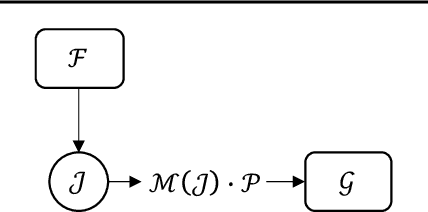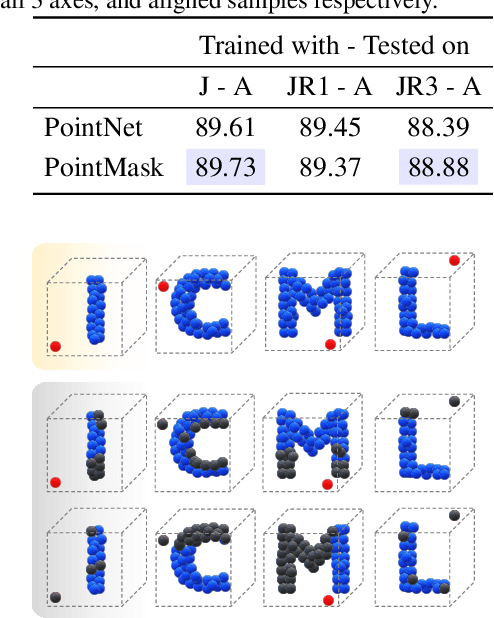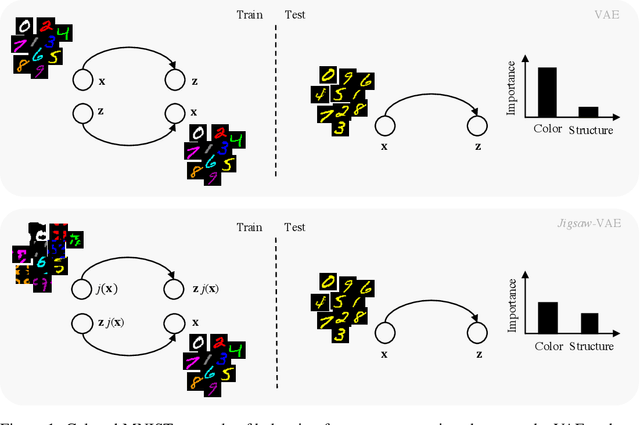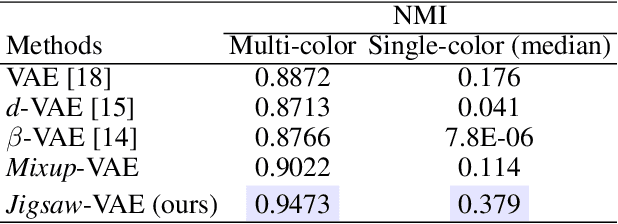Tonya Custis
PointMask: Towards Interpretable and Bias-Resilient Point Cloud Processing
Jul 09, 2020



Abstract:Deep classifiers tend to associate a few discriminative input variables with their objective function, which in turn, may hurt their generalization capabilities. To address this, one can design systematic experiments and/or inspect the models via interpretability methods. In this paper, we investigate both of these strategies on deep models operating on point clouds. We propose PointMask, a model-agnostic interpretable information-bottleneck approach for attribution in point cloud models. PointMask encourages exploring the majority of variation factors in the input space while gradually converging to a general solution. More specifically, PointMask introduces a regularization term that minimizes the mutual information between the input and the latent features used to masks out irrelevant variables. We show that coupling a PointMask layer with an arbitrary model can discern the points in the input space which contribute the most to the prediction score, thereby leading to interpretability. Through designed bias experiments, we also show that thanks to its gradual masking feature, our proposed method is effective in handling data bias.
Jigsaw-VAE: Towards Balancing Features in Variational Autoencoders
May 12, 2020



Abstract:The latent variables learned by VAEs have seen considerable interest as an unsupervised way of extracting features, which can then be used for downstream tasks. There is a growing interest in the question of whether features learned on one environment will generalize across different environments. We demonstrate here that VAE latent variables often focus on some factors of variation at the expense of others - in this case we refer to the features as ``imbalanced''. Feature imbalance leads to poor generalization when the latent variables are used in an environment where the presence of features changes. Similarly, latent variables trained with imbalanced features induce the VAE to generate less diverse (i.e. biased towards dominant features) samples. To address this, we propose a regularization scheme for VAEs, which we show substantially addresses the feature imbalance problem. We also introduce a simple metric to measure the balance of features in generated images.
 Add to Chrome
Add to Chrome Add to Firefox
Add to Firefox Add to Edge
Add to Edge